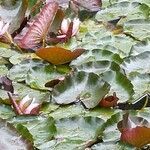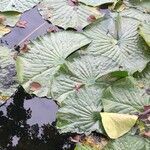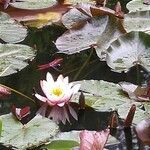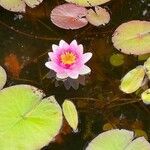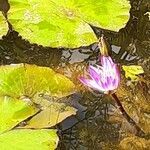A herb. It grows in water. The rhizomes or underground stems are erect or curve upwards. They are unbranched. The leaf blade is half round and 10-25 cm across. It is papery. It is smooth underneath. The base is deeply heart shaped and the lobes at the base are overlapping. The flower floats. It is 10-20 cm across. There are 20-25 petals which are white. The fruit are half round and 2.5-3 cm across. The seeds are narrowly oval and 2-4 mm long. They are smooth.
